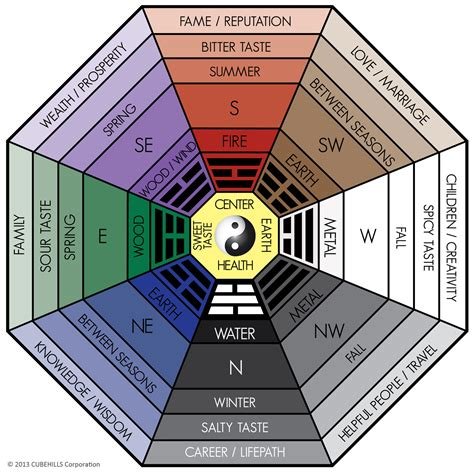DIY Pet Care: Top Ideas for Keeping Your Furry Friends Happy
Introduction:
Welcoming a pet into your home is a joyful and rewarding experience. Whether you’re a first-time pet owner or a seasoned animal lover, providing the best care for your furry friends is essential for their health and happiness. In this blog post, we’ll explore a variety of DIY pet care tips and ideas to help you create a nurturing and fulfilling environment for your beloved pets. From choosing the right pet for your lifestyle to addressing common behavioral issues, we’ll cover all aspects of pet care to ensure that both you and your pet have a harmonious and enjoyable relationship. So, grab your notebook and pen, because we’re about to embark on a journey of learning and discovery to keep your four-legged companions healthy, happy, and loved. Let’s dive into the top ideas for keeping your furry friends content and thriving in your care.
Choosing the Right Pet for Your Lifestyle
When considering getting a pet, it is important to choose one that fits well with your lifestyle. Research the various options available and consider factors such as activity level, space requirements, and grooming needs. If you lead an active lifestyle, a dog that enjoys exercise and outdoor activities may be a good fit. On the other hand, if you have a smaller living space or are away from home frequently, a low-maintenance pet like a cat or fish may be a better choice.
It is also important to take into account any allergies or sensitivities that you or your family members may have. Some pets, such as certain breeds of dogs and cats, may trigger allergies, so it is important to consider this before bringing a pet into your home. Additionally, consider the amount of time and effort you are willing to commit to pet care and whether a high-energy pet or a more independent pet would be a better match for your lifestyle.
Finally, consider the long-term commitment of pet ownership. Pets can live for many years, so it is important to choose a pet that will fit well with your lifestyle not only now, but also in the years to come. Taking the time to thoroughly consider these factors will help ensure that you choose the right pet for your lifestyle and set you and your new pet up for a successful relationship.
By carefully assessing your own lifestyle and the needs of different pets, you can make an informed decision that will benefit both you and your new pet. Remember, every pet is unique, so be sure to consider individual personalities and needs when making your choice.
Creating a Safe and Comfortable Environment
When it comes to creating a safe and comfortable environment for your pet, there are several important factors to consider. One of the first things to think about is the physical space where your pet will be spending most of their time. This could be a crate, a cage, a tank, or simply a designated area in your home. It’s crucial that this space is free of any potential hazards such as small objects that could be swallowed, toxic plants, or sharp edges.
Another important aspect of creating a safe and comfortable environment for your pet is temperature control. Different animals have different temperature requirements, so it’s essential to research the specific needs of your pet and ensure that their environment is neither too hot nor too cold. Providing a cozy bed or hiding spot can also help your pet feel secure and comfortable.
The overall cleanliness of your pet’s environment is also crucial to their health and well-being. Regular cleaning and disinfecting of their living space, as well as providing fresh bedding or substrate, will help to prevent the spread of disease and keep your pet comfortable. Additionally, providing mental stimulation through toys, tunnels, or climbing structures can help alleviate stress and boredom, creating a more comfortable environment for your pet.
Lastly, it’s important to consider your pet’s access to food, water, and a designated bathroom area. Ensuring that these basic needs are easily accessible will help your pet feel safe and comfortable in their environment, and reduce the risk of stress-related behavioral issues.
Establishing a Routine for Your Pet’s Care
When it comes to caring for your pet, establishing a routine is essential for their well-being and happiness. Just like humans, animals thrive on consistency and predictability, so setting a daily schedule can help them feel secure and content in their environment.
One of the most important aspects of establishing a routine for your pet’s care is ensuring that they have regular mealtimes. Feeding your pet at the same time each day can help regulate their digestive system and prevent overeating. It also allows you to monitor their appetite and detect any changes in their eating habits, which could be a sign of underlying health issues.
In addition to regular mealtimes, it’s important to schedule daily exercise and playtime for your pet. Dogs, in particular, need plenty of physical activity to maintain their health and prevent behavioral issues. By setting aside time each day for walks, games, or other types of exercise, you can help your pet stay active and fit.
Lastly, establishing a routine for your pet’s care also involves creating a consistent grooming schedule. Regular brushing, bathing, and nail trimming are essential for maintaining your pet’s hygiene and preventing skin and coat issues. By incorporating these tasks into your daily or weekly routine, you can help your pet look and feel their best.
Ensuring a Well-Balanced Diet for Optimal Health
Ensuring that your pet has a well-balanced diet is crucial for their overall health and well-being. Choosing the right type of food for your pet is the first step in this process. Different pets have different dietary needs, so it’s important to do your research and consult with a veterinarian to determine the best diet for your specific pet.
Once you’ve selected the appropriate food, it’s important to establish a feeding routine that works for both you and your pet. Consistency is key when it comes to feeding times and portion sizes, as this helps to regulate your pet’s metabolism and prevent overeating or undereating.
In addition to the type and timing of their meals, it’s also important to consider the nutritional content of your pet’s diet. Look for foods that are high in protein, healthy fats, and essential vitamins and minerals. Avoid foods with excessive fillers or artificial ingredients, as these can have a negative impact on your pet’s health.
Finally, it’s essential to monitor your pet’s weight and overall health to ensure that their diet is meeting their needs. Regular check-ups with the veterinarian can help to address any dietary concerns and make adjustments as needed to support your pet’s optimal health.
Maintaining Proper Hygiene and Grooming
Proper hygiene and grooming are essential for maintaining your pet’s health and overall well-being. Regular grooming helps to prevent matting, tangles, and skin irritations while also providing an opportunity to check for any lumps, bumps, or injuries. It is important to establish a grooming routine that is suitable for your pet’s breed, age, and coat type.
When it comes to hygiene, keeping your pet clean and free of parasites is crucial. Regular baths, nail trims, and teeth brushing are all important aspects of maintaining your pet’s hygiene. It is also essential to regularly clean your pet’s ears and check for any signs of infection or irritation.
Additionally, grooming and hygiene practices can vary greatly depending on the type of pet you have. For example, cats may require less frequent baths than dogs, but they still need regular brushing to minimize shedding and hairballs. Small animals such as rabbits and guinea pigs also have specific grooming needs, such as regular nail trims and coat care.
Overall, proper hygiene and grooming play a vital role in keeping your pet healthy and comfortable. By establishing a regular grooming routine and paying attention to your pet’s hygiene needs, you can help prevent common health issues and maintain a happy and well-cared-for companion.
Fun and Engaging Toys and Activities
When it comes to keeping your pet happy and entertained, fun and engaging toys and activities are essential. Whether you have a dog, cat, bird, or any other type of pet, providing them with toys and activities can help prevent boredom and promote mental and physical stimulation. Interactive toys, such as puzzle feeders or treat-dispensing toys, can keep your pet entertained for hours, especially when you’re not at home. These toys can also provide mental challenges, which can be beneficial for pets with high energy or those that have a tendency to become destructive when bored.
Another important aspect of fun and engaging toys and activities is to ensure they are safe and appropriate for your pet. For example, small toys or toys with removable parts can pose a choking hazard, so it’s important to choose toys that are the right size for your pet. Additionally, toys should be made of non-toxic materials and should not have any sharp edges that could potentially harm your pet.
Aside from toys, engaging activities such as regular walks, playtime, and training sessions can also provide mental and physical stimulation for your pet. For dogs, interactive activities such as agility training or fetch can help burn off excess energy and keep them mentally sharp. For cats, activities such as interactive play with a wand toy or a cat tree with platforms and hiding spots can provide mental and physical exercise.
In conclusion, providing your pet with fun and engaging toys and activities is essential for their overall well-being. Not only do these toys and activities prevent boredom, but they also promote mental and physical stimulation, which is important for a happy and healthy pet.
Keeping Your Pet Active and Fit
One of the most important aspects of pet ownership is ensuring that your furry friend is getting enough physical exercise to stay active and fit. This is especially crucial for dogs and cats, as they need regular activity to prevent obesity and maintain proper health.
Regular walks and playtime are essential for keeping your pet active and engaged. Whether it’s tossing a ball for your dog in the yard or dangling a toy on a string for your cat to chase, engaging in physical activity with your pet is crucial for their overall well-being.
Furthermore, mental stimulation is also important for keeping your pet active and fit. Puzzle toys and interactive games can help keep your pet engaged and prevent behavioural issues that can stem from under–stimulation.
Lastly, it’s important to consult with your veterinarian to determine the appropriate amount of exercise for your pet based on their breed, age, and overall health. By keeping your pet active and fit, you can help them lead a long, healthy, and happy life.
Building a Strong Bond through Positive Reinforcement
Building a strong bond with your pet is crucial for a harmonious and fulfilling relationship. Positive reinforcement is a powerful tool that can help strengthen the connection between you and your furry friend. By using positive reinforcement, you can encourage the behaviors you want to see in your pet, while also building trust and mutual respect.
One of the key elements of positive reinforcement is consistency. It’s important to consistently reward your pet for good behavior and ignore or redirect unwanted behaviors. This will help your pet understand what is expected of them and make it more likely for them to repeat the desired actions.
Another important aspect of positive reinforcement is timing. It’s essential to deliver the reward immediately after the desired behavior occurs, so your pet can make the connection between their actions and the reward. This will reinforce the behavior and strengthen the bond between you and your pet.
Positive reinforcement can take many forms, including treats, praise, and playtime. It’s important to find out what motivates your pet and use that to your advantage. By using positive reinforcement effectively, you can build a strong bond with your pet that will last a lifetime.
Addressing Common Pet Behavioral Issues
When it comes to owning a pet, it’s important to understand that behavioral issues are a common occurrence. Whether you have a dog, cat, bird, or another type of pet, it’s essential to address and correct any behavioral problems in order to maintain a healthy and happy relationship with your furry friend.
One common pet behavioral issue is separation anxiety. Many pets struggle with being left alone, which can lead to destructive behavior such as chewing, digging, or excessive barking. It’s important to address this issue by gradually acclimating your pet to being alone and providing plenty of mental and physical stimulation to keep them occupied when you’re not around.
Another common behavioral problem is aggression. Whether it’s towards other animals, strangers, or even family members, aggression can be a serious issue that requires intervention. Training and socialization are key components in addressing aggressive behavior, and seeking the help of a professional trainer or behaviorist may be necessary for more severe cases.
Another prevalent issue is excessive barking or meowing. If your pet is constantly vocalizing, it could be a sign of boredom, anxiety, or a need for attention. Providing plenty of interactive toys, regular exercise, and positive reinforcement for calm behavior can help reduce excessive vocalization.
Frequently Asked Questions
What factors should I consider when choosing a pet for my lifestyle?
Consider factors such as the size of your living space, time commitment, and activity level when choosing a pet that fits your lifestyle.
How can I create a safe and comfortable environment for my pet?
Provide a cozy bed, safe toys, and pet-proof your home by removing any potential hazards to create a safe and comfortable environment for your pet.
Why is establishing a routine important for my pet’s care?
Establishing a routine helps your pet feel secure and provides predictability for their daily activities, including feeding, exercise, and playtime.
What should I consider for my pet’s diet to ensure optimal health?
Provide a well-balanced diet rich in nutrients, vitamins, and minerals suitable for your pet’s species and stage of life to ensure optimal health.
How can I maintain proper hygiene and grooming for my pet?
Regularly brush your pet, trim their nails, bathe them as needed, and keep their living areas clean to maintain proper hygiene and grooming for your pet.
What are some fun toys and activities to keep my pet engaged?
Interactive toys, puzzle feeders, and engaging activities such as hide-and-seek or agility training can help keep your pet mentally stimulated and entertained.
How can I keep my pet active and fit?
Take your pet for daily walks, engage in play sessions, and provide activities that encourage movement and exercise to help keep your pet active and fit.
How can I build a strong bond with my pet through positive reinforcement?
Use positive reinforcement such as treats, praise, and rewards to encourage good behavior and build a strong bond with your pet based on trust and mutual respect.
What are effective ways to address common pet behavioral issues?
Consult with a professional trainer or behaviorist to address common pet behavioral issues and develop a plan that includes positive training methods to modify undesirable behaviors.






